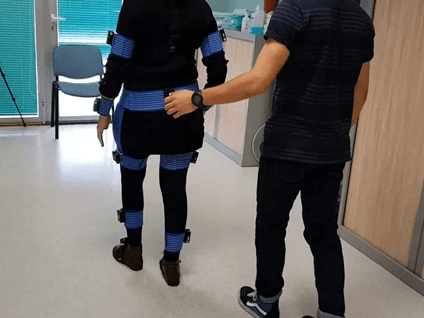-
PhD Thesis
Three-Level Design in Healthcare. Motion Capture for Gait Analysis in Rehabilitation / Marín Boné, Javier
- Author: Javier Marín Boné
- Tutor: Dra. Teresa Blanco Bascuas y Dr. José Javier Marín Zurdo
- Program: Ingeniería de Diseño y Fabricación
- Defense date: April 2021
- Repository:

In healthcare, technologies such as motion capture, dynamometry, or surface electromyography, among others, offer broad possibilities to objectify the patient musculoskeletal capacity, supporting the diagnosis and the rehabilitation process assessment. However, to adequately adapt and integrate these technologies in health services is a complex challenge.
This thesis presents a compendium of studies that face different challenges detected in the design, development and usage processes of technologies for the musculoskeletal system assessment in the healthcare field. Specifically, we focus on motion capture systems; its complexity at the procedure, technological and data analysis levels highlights the need to address this research.
The first study presents the needs that motivate this thesis, which is based on previous experiences and a state-of-the-art review. The following work introduces the Octopus methodology, aimed at supporting the design of motion capture systems. Octopus outlines the factors to be considered in the design and poses the concept of “Three-Level Design”: service, product and software, which are the main work lines to face the development of applications to assess the musculoskeletal system.
At this point, as a result of different collaborations of the research group with hospitals, the research was focused on the design of a gait analysis clinical test based on motion capture to monitor rehabilitation treatments. As a result, three investigations were conducted framed in each of the three lines: service, product and software. These studies show how to integrate the gait analysis test in hospital rehabilitation, present a motion capture system called Move-Human Sensors (MH) that allows conducting gait analysis tests and propose a method to manage the resulting motion data.
This thesis contributes to design theory, providing a global perspective based on three levels: service, product, and software. In this line, we present a motion capture system whose design and development cover the three levels and answer several associated challenges. This research’s implications exceed the scope of the publications described since it is framed in different projects and is supported by other scientific communications and developments. Additionally, these research results are being extrapolated to other related areas, both in the healthcare context itself -to conduct functional biomechanical tests-, and in the industrial sector -to conduct workplace ergonomic assessments-, where this technology can add relevant value.
